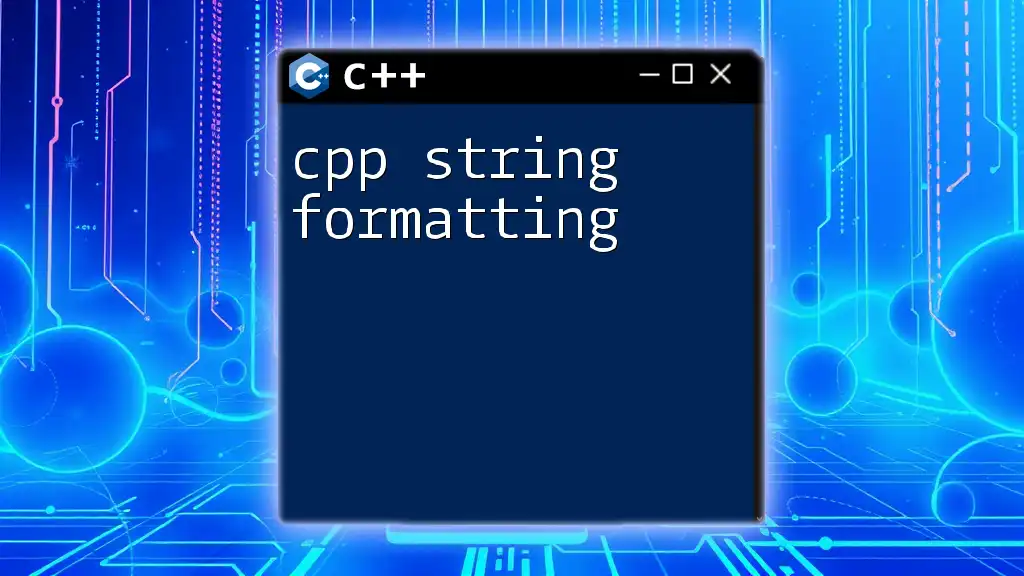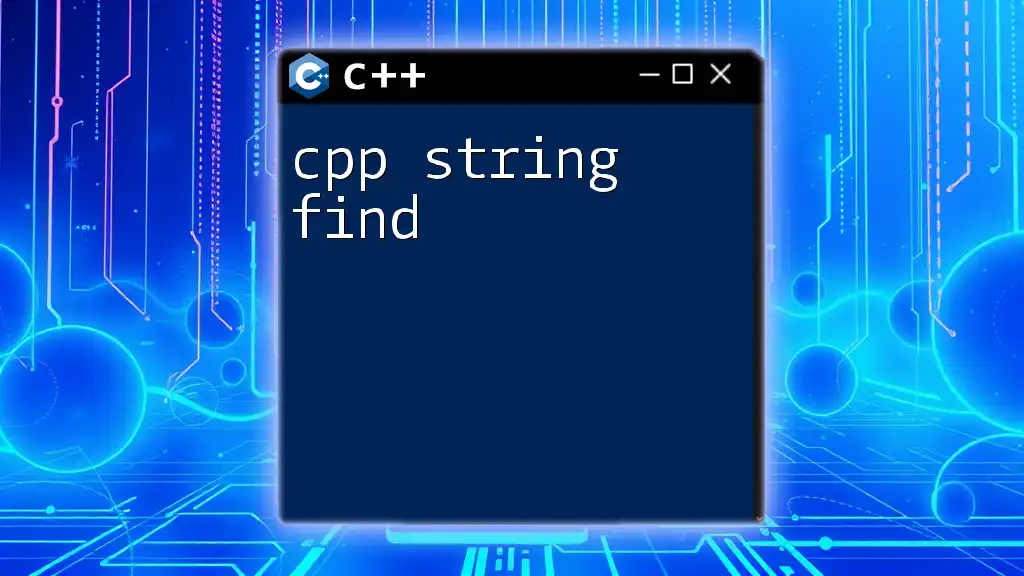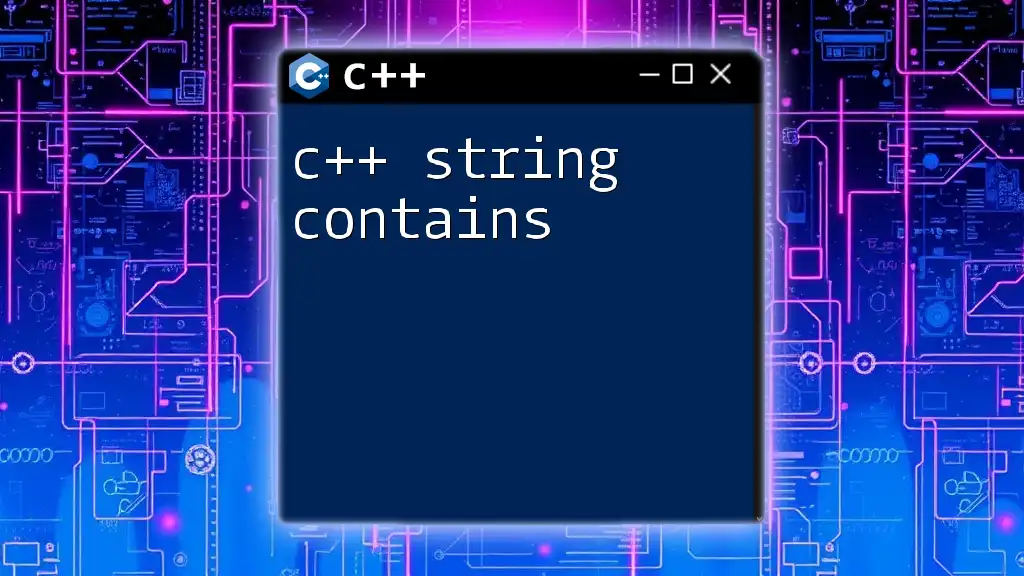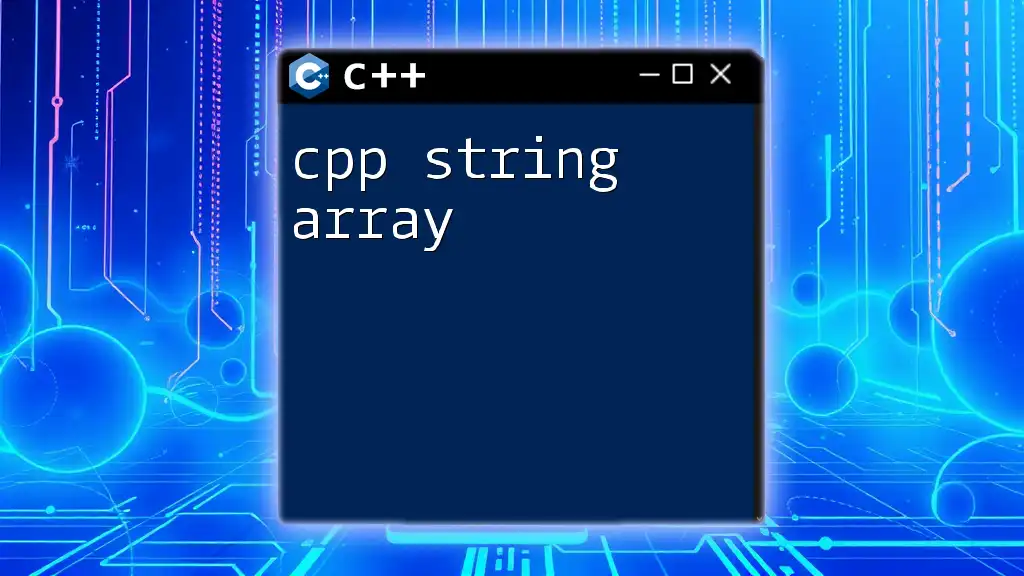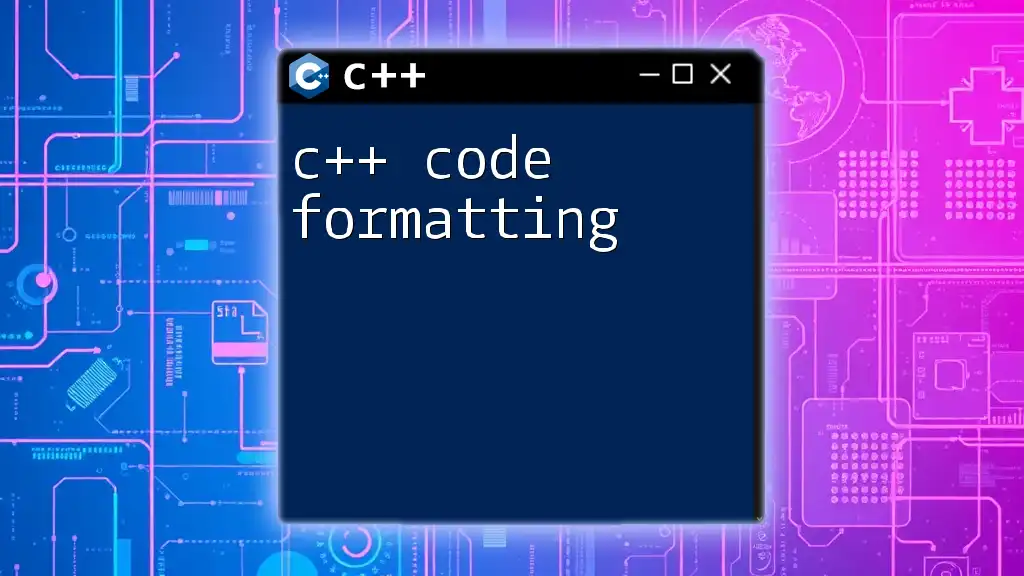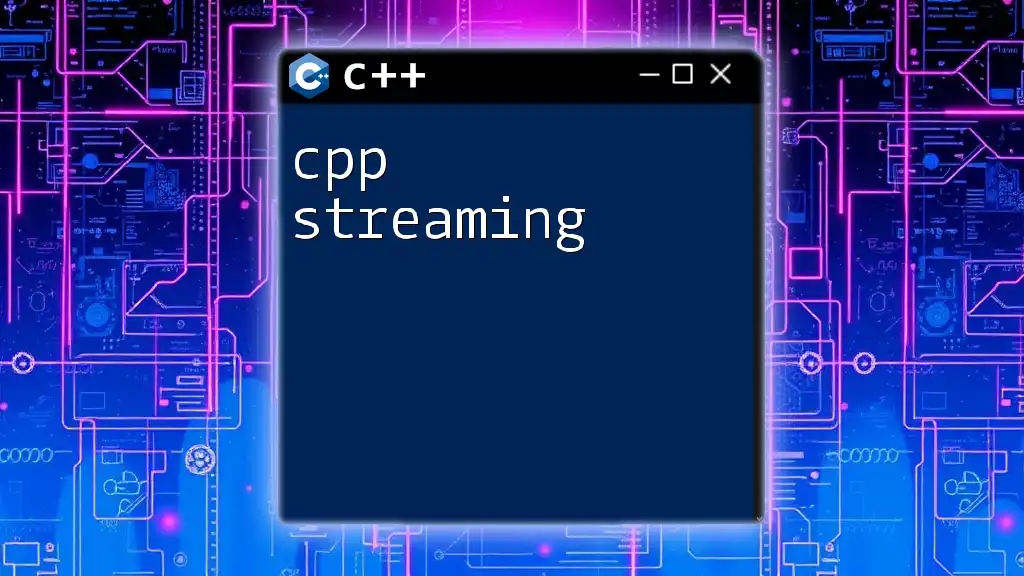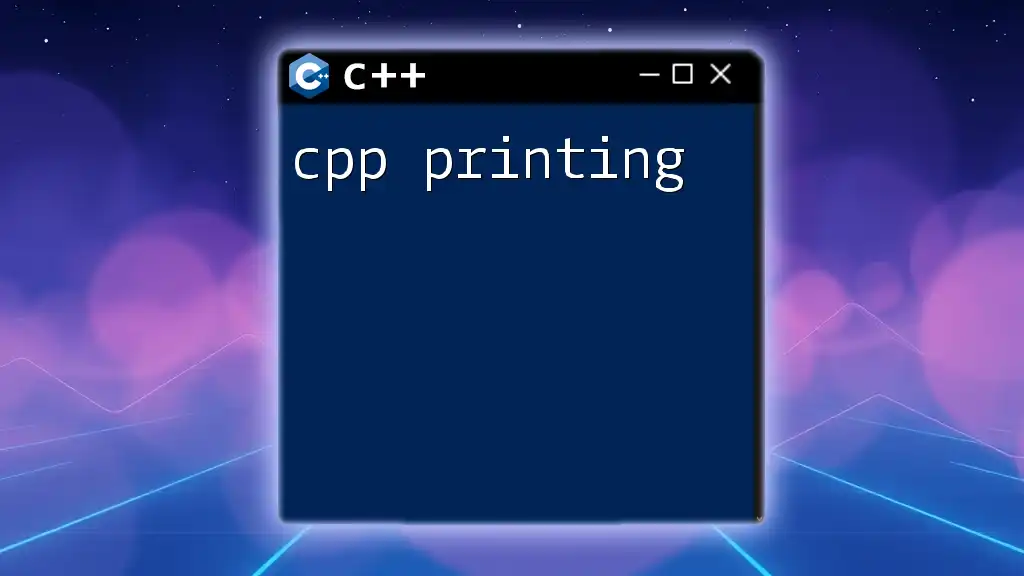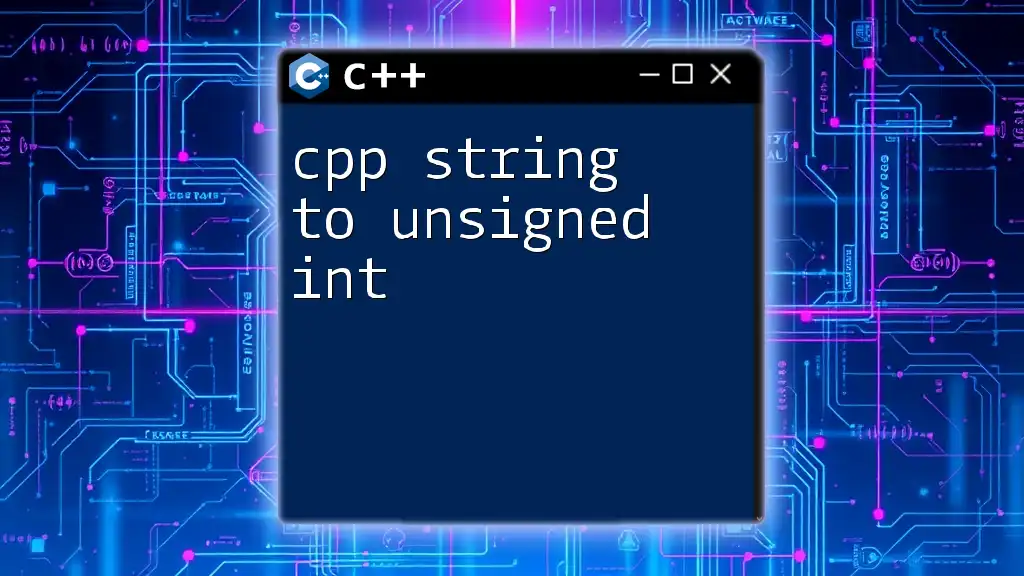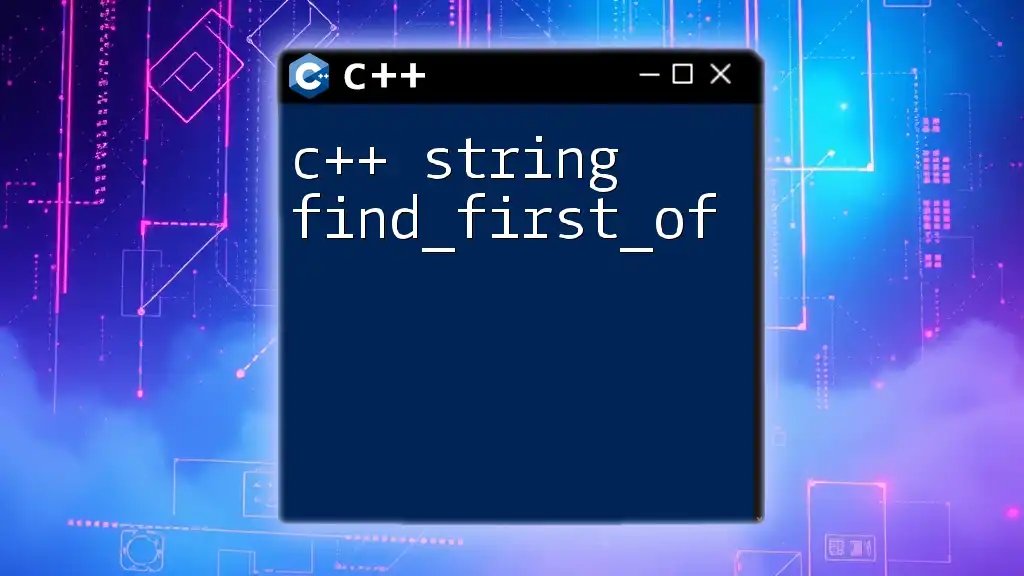C++ string formatting often involves using the `std::stringstream` class or the `std::format` function (available in C++20) to create formatted strings efficiently.
Here's a code snippet demonstrating both methods:
#include <iostream>
#include <sstream>
#include <format> // Requires C++20
int main() {
// Using std::stringstream
std::stringstream ss;
int value = 42;
ss << "The answer is: " << value;
std::string formattedString1 = ss.str();
std::cout << formattedString1 << std::endl;
// Using std::format (C++20)
std::string formattedString2 = std::format("The answer is: {}", value);
std::cout << formattedString2 << std::endl;
return 0;
}
This code snippet demonstrates two methods of string formatting in C++: using `std::stringstream` for pre-C++20 compatibility and `std::format` for a modern approach in C++20 and beyond.
C++ String Formatting
Understanding the Importance of String Formatting in C++
String formatting is a fundamental skill in C++ programming that enhances how data is presented. Effective string formatting enables developers to produce clear and user-friendly output, making it vital for user interfaces, logging, and debugging.
When you format strings appropriately, you enhance the readability and maintainability of your code. Whether you're displaying numbers, dates, or user messages, knowing how to format strings correctly allows for a more polished application.
Overview of C++ String Formatting Techniques
C++ provides various methods for string formatting, with each method catering to specific needs and preferences. Understanding these differences can help you choose the right approach for any given situation:
- Traditional Methods: These include functions like `printf()`, which have been available since the early days of C and C++.
- Stream-Based Methods: Using `std::ostringstream` and related classes in the C++ Standard Library allows for type-safe string handling and is more C++ idiomatic.
- Modern C++ Feature (C++20): The introduction of `std::format` enables concise and expressive formatting, drawing inspiration from Python’s string format capabilities.
The Basics of C++ String Formatting
Exploring C++ String Class
C++ strings are encapsulated in the `std::string` class found in the standard library. You can create a string using constructors, and it supports a variety of operations like concatenation, substring extraction, and comparison. This versatility is crucial for effective string manipulation.
Introduction to String Formatting Methods
Fundamental methods for formatting strings include:
- `printf` Function: A C-style function that formats strings and outputs to the console. It's versatile but requires careful handling of types.
- `std::ostringstream`: Leveraging the output stream capabilities allows you to build strings more safely, avoiding type mismatches and offering a more modern syntax.
Detailed Exploration of String Formatting Techniques
Using `printf` for Formatted Strings in C++
The `printf()` function is a classic approach to format strings. The syntax is simple:
#include <cstdio>
int main() {
int age = 30;
printf("I am %d years old.\n", age);
return 0;
}
In this example, `%d` acts as a placeholder for an integer. The `printf` function formats the output accordingly. Though powerful, misuse of type specifiers can lead to bugs, making it somewhat less safe than modern alternatives.
Modern C++: Using `std::ostringstream`
`std::ostringstream` provides a more modern and type-safe method for string formatting. By utilizing stream operations, you can concatenate various data types seamlessly:
#include <iostream>
#include <sstream>
int main() {
std::ostringstream oss;
oss << "Hello, " << "world " << 2023;
std::string formattedString = oss.str();
std::cout << formattedString << std::endl;
return 0;
}
In this example, we construct a formatted string by chaining `<<` operators, which can handle various data types automatically. This method enhances readability and maintainability of the code.
C++20: Format Strings with std::format
With the advent of C++20, `std::format` was introduced, allowing for intuitive syntax and formatting capabilities similar to Python’s f-strings. Here’s how you can utilize `std::format`:
#include <format>
#include <iostream>
int main() {
int value = 42;
std::string formattedString = std::format("The answer is {}", value);
std::cout << formattedString << std::endl;
return 0;
}
The `{}` serves as a placeholder for the variables being formatted, producing clean and easily readable code. This new feature encapsulates the best of modern formatting techniques, combining the power and flexibility of prior methods in a single, expressive syntax.
Best Practices for String Formatting in C++
Choosing the Right Formatting Method
Selecting the appropriate method depends on various factors including:
- Performance: Simpler methods may perform faster but could be more prone to errors.
- Ease of Use: More readable syntax, like `std::format`, enhances code maintainability.
- Context: Use traditional methods for legacy codebases and modern methods for new projects.
Ensuring Readability and Maintainability
Adopt the following strategies to enhance your string formatting practices:
- Consistency: Use a consistent method across your project.
- Descriptive Strings: Clearly label what output represents, especially for complex data.
- Avoid Over-Complexity: Keep formatting logic straightforward to prevent confusion.
Common Pitfalls in C++ String Formatting
Debugging Common Formatting Errors
Be aware of typical mistakes when formatting strings, such as:
- Mismatched Types: Ensure that the format specifiers correspond correctly to the arguments provided.
- Buffer Limits: In cases where string sizes are predefined, ensure buffers are sufficiently large to avoid overflow.
Handling Edge Cases
When formatting strings, consider the following edge cases:
- Precision and Width Specifications: Use the right specifiers to control the appearance of floating-point numbers.
#include <cstdio>
int main() {
double pi = 3.14159;
printf("Pi rounded to 2 decimal places: %.2f\n", pi);
return 0;
}
In this code, `%.2f` indicates that the floating-point number will be rounded to two decimal places.
Conclusion
String formatting in C++ is a vital skill that enhances code readability and usability. By mastering the array of techniques from `printf` to `std::format`, you can improve the way information is presented in your applications.
Additional Resources for Further Learning
To deepen your understanding of C++ string formatting, explore books like "C++ Primer" and online resources like forums, coding bootcamps, and dedicated C++ websites. Engaging with a community can further enrich your learning experience.
Call to Action
Join our community to engage with fellow learners, share experiences, and find valuable resources. Sign up for newsletters to stay updated on tutorials and tips related to C++ programming and string formatting.

